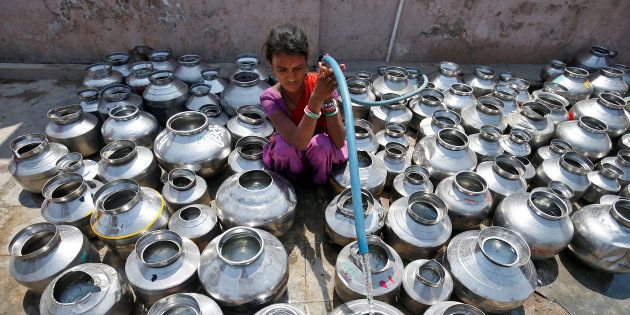
Bengaluru, Delhi and Hyderabad may run out of water by 2020, a study published by the Niti Aayog says. The 'Composite Water Management Index' report surveyed the ground water levels across India, among other factors, and predicted that 21 Indian cities will have no water by 2020.
"Although 93 percent of India's urban population has access to 'basic water', there are still sharp inter-city and intra-city inequities. Further, supply gaps are causing city dwellers to depend on privately extracted ground water, bringing down local water tables. In fact, by 2020, 21 major cities, including Delhi, Bangalore, and Hyderabad, are expected to reach zero groundwater levels, affecting access for 100 million people," the report said.
The study also found that the median state in a list on providing water supply on urban areas, could only provide water to 75 percent of the state's urban population. Bihar could only provide water to 20 percent of its urban population, and states like Rajasthan, Jharkhand and Kerala weren't faring to well either. Rajasthan could only provide 38 percent of its urban population with drinking water in 2016-17.
In comparison, Gujarat provided drinking water to 100 percent of its urban population, and Madhya Pradesh and Punjab were close behind.
The scenario, the report states, is vastly different when it comes to rural areas. In the foreword, Amitabh Kant, director of NITI Aayog wrote that 70% of the drinking water being supplied to households in India is contaminated. "With nearly 70 percent of water being contaminated, India is placed at 120th amongst 122 countries in the water quality index," he wrote.
The contamination of water is more rampant in rural areas, the report stated. According to surveys cited by the report, 800 million people in India live in rural areas and form 70 percent of the country's population. While 87 percent of these households get water, 'safe' water is a staggering challenge. "Currently, only half of the rural population has access to safely-managed water —far behind even our neighbors such as China and Bangladesh—resulting in one of the highest disease burdens due to water-borne diseases in the developing world, and about two lakh annual deaths from inadequate (or unsafe) drinking water," the report states.